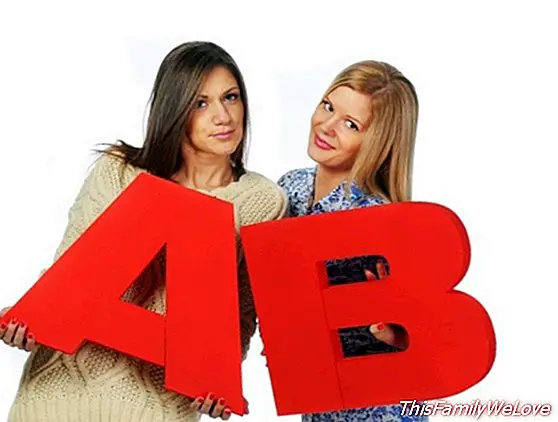How blood groups work

exist 4 types of blood groups A, B, AB and O and these in turn can be positive or negative. This range opens up to the wide combinations that we all know, which in turn give rise to possible and impossible compatibilities. Why is the 0- known as a universal donor and can only receive blood from your group? And why can the AB + group get blood from any group?
The answer to these questions is to know how antigens work, which are proteins that are found on the surface of red blood cells or blood cells and that give rise to blood groups, and in knowing what is the function of antibodies, which they react according to the antigens and give rise to Rh positive or negative.
Why is not blood always compatible?
The identification of blood groups was a very important fact, both for its contribution to genetics and the importance of transfusions. It was the German pathologist Karl Landsteiner who in the year 1900 discovered that blood groups are substances that are attached to the membrane of red blood cells or also called red blood cells. The presence of these substances determines the blood group and the compatibility when carrying out blood transfusions.
When we talk colloquially about performing a blood transfusion, it is not the blood as such that is transferred but each component of it, separately, that is to say the red blood cells or the red blood cells, the plasma and / or the platelets. It is the compatibility of some and other elements that is analyzed before carrying out a transfusion.
The components of blood
- Red blood cells They are discs that contain hemoglobin, a substance rich in iron whose function is to transport oxygen to all the cells of the organism.
- The plasma it is the liquid component that is responsible for moving the blood cells.
- Platelets They are responsible for grouping in the wounds causing a contraction of the blood vessel and forming a clot that stops the bleeding.
What are the blood groups?
The two most important are the ABO group and the Rh group.
1. The AB0 Group
In the case of Group AB0, the substance that determines the different blood groups are the sugar residues that are on the proteins, and according to their composition we find four groups: A, B, AB and 0.
A person from the AB group is a universal recipient to receive red blood cells or red blood cells from any other person; while a person from group 0 is a universal donor, because he can donate red blood cells to any other person.
On the other hand, AB people can donate plasma to anyone; and in turn, people of group O are universal recipients of plasma (they can receive plasma from any donor).
2. The Rh group
People who have the Rh protein are Rh positive; and those that do not have it, are Rh negative. Blood or RBC-positive red blood cells can usually be transfused to patients with a Rh-negative group; except in the cases of women of childbearing age or patients who have previously received Rh positive red blood cells, and have developed antibodies against Rh proteins. (Anti-D antibodies).
How blood group identification is performed
The identification of the blood group of patients by means of an identification plate is something that is never taken into account, not even in emergency situations in order to avoid false interpretations, since it may be the case that a person has exchanged the bracelet with a family member or friend ...
Routinely, an identification of the blood group of each patient is made before being transfused in all cases. In addition to having the blood group, other tests are required to ensure that the transfusion is safe. These are the "irregular antibody" tests and cross-match test.
In case of extreme urgency, group 0 negative blood cells (universal donor) are given, and a blood sample is sent to identify the patient's group, and then continue to be transfused with the same group of the patient.
Dr. José Luis Bueno. Specialist in Hematology and Hemotherapy of La Milagrosa Hospital




